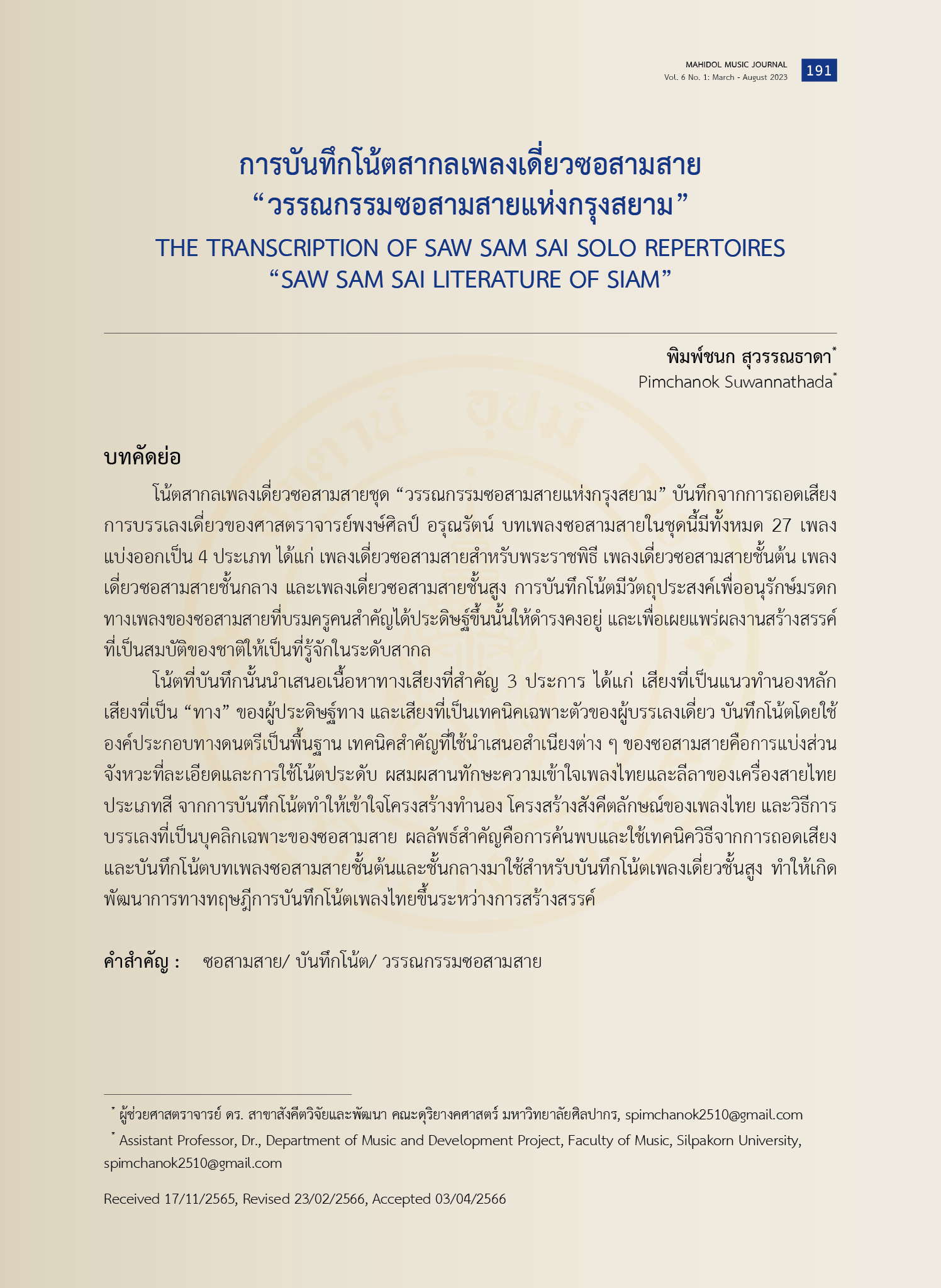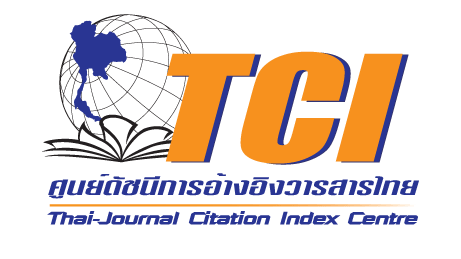THE TRANSCRIPTION OF SAW SAM SAI SOLO REPERTOIRES “SAW SAM SAI LITERATURE OF SIAM”
Keywords:
Saw Sam Sai, Transcription, Saw Sam Sai LiteratureAbstract
Repertoires of “Saw Sam Sai Literature of Siam” transcribed from the solo saw sam sai (Thai three-string fiddle) recording of Professor Pongsilp Arunrat. Twenty-seven pieces in this collection can be classified in 4 categories: solo repertoire for the royal ceremony, solo saw sam sai repertoire for fundamental level, solo saw sam sai repertoire for intermediate level, and solo saw sam sai repertoire for advance level. The objectives of transcription are to preserve unique practices of the master and to publicize the national heritage to the international level.
The transcription presents 3 important sound contents: sound of the main melodies, sound of style or “practices” of the inventor, and sound of unique techniques of the soloist. Complex subdivision of rhythm and ornamentations, blended with well realization of traditional Thai music and Thai bow-string instrument music styles have been used as important techniques for transcribing. Creating the transcription have made more understanding about the melodic and formal structure of Thai music as well as special characteristics of saw sam sai’s performance practice. For the important result, the fundamental and the intermediate level’s transcription skill have been developed and used for transcribing repertoire in the advance level.
References
Arunrat, Pongsilp. Melodious Sound of Saw Sam Sai. Bangkok: Upbeat Creation, 2016. (in Thai)
Arunrat, Pongsilp, and Pimchanok Suwannathada. Saw Sam Sai Literature of Siam. Bangkok: Upbeat Creation, 2016. (in Thai)
Suwannathada, Pimchanok. "Music Notation of Traditional Thai Music for Piano Solo." Veridian E-Journal (International) 7, no. 4 (January-June 2014): 203-210.
Suwannathada, Pimchanok. Piano Literature of Siam. Bangkok: Kate Karat Press, 2012. (in Thai)

Downloads
Published
How to Cite
Issue
Section
License
Copyright (c) 2023 College of Music

This work is licensed under a Creative Commons Attribution-NonCommercial-NoDerivatives 4.0 International License.
The copyright of the article belongs to the author. Published articles represent the views of the authors. The editorial team neither necessarily agree with nor take any responsibility for the article.





